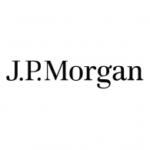On Monday, June 22, the securities industry will be taking its first step into the new normal after a global pandemic.
Wall Street is moving cautiously toward reopening and Monday, June 22, will serve as a milestone for when the securities industry took its first step into the new normal following a crushing pandemic that took 21,000 lives in New York City and brought the world to a halt.
After three months of a pandemic lockdown, Bill de Blasio, mayor of New York City, declared on Thursday, June 18, that the city was moving into Phase Two of the reopening.

Bill de Blasio
“We still have a long way to go, we all know that, but based on the really good indicators we’ve seen today and for days and days before that, I’m very comfortable now saying that we will start phase two on Monday, June 22nd,” de Blasio says. “On Monday, we’ll be ready to take a big step forward for this city.”
Key players in the securities industry have already begun their steps forward.
Late last month, the open outcry trading floor of the New York Stock Exchange (NYSE) partially reemerged May 26, which followed the May 4 partial reopening of the NYSE Arca Options Trading Floor in San Francisco.
This week, in an NYSE Trader Update from June 15, officials announced that on Wednesday, June 17, the second phase was launched “with the reintroduction of a subset of Designated Market Makers (DMM). Each DMM unit may choose to return a limited number of staff to conduct manual trading, including the opening and closing auctions, in the DMM unit’s assigned securities. DMMs will be precluded from accepting verbal bids and offers during this phase of the reopening.”
The NYSE trading floor will “continue to operate with reduced headcount and additional safety precautions to accommodate health-focused considerations,” according to the update.
 “Until the trading floor fully reopens, NYSE expects a subset of NYSE-listed securities will continue to be supported by the DMM remotely. NYSE will publish a daily list on its website of those securities that will be ineligible for manual auctions conducted from the floor,” according to NYSE.
“Until the trading floor fully reopens, NYSE expects a subset of NYSE-listed securities will continue to be supported by the DMM remotely. NYSE will publish a daily list on its website of those securities that will be ineligible for manual auctions conducted from the floor,” according to NYSE.
Interestingly, NYSE officials have now lifted the ban on trading floor staff using public transportation.
In the Midwest, on Monday, June 15, Cboe Global Markets reopened its Cboe Options Exchange trading floor in Chicago “and successfully resumed hybrid trading — which includes open-outcry and electronic trading mechanisms,” according to a prepared statement from Cboe.
“The Cboe Options Exchange trading floor reopened yesterday and is accommodating open-outcry trading activity with a modified floor layout, with stringent health and safety protocols in place for the well-being of the trading floor community, which includes Cboe associates and trading permit holders (TPHs),” according to Cboe.
The reopening was temporarily delayed because of city closures imposed by Chicago Mayor Lori Lightfoot who was responding to the George Floyd protest demonstrations. Floyd was an African American man who died in police custody during an arrest in Minneapolis, Minn.
 In the Cboe statement about the reopening, Chris Isaacson, executive vice president, chief operating officer (COO) of Cboe Global Markets, reports that the reopening required “consulting with public health experts and developing enhanced safety protocols, engaging with our regulators on rule changes, to reconfiguring the entire floor and testing equipment with our TPH members, brokers and market makers.”
In the Cboe statement about the reopening, Chris Isaacson, executive vice president, chief operating officer (COO) of Cboe Global Markets, reports that the reopening required “consulting with public health experts and developing enhanced safety protocols, engaging with our regulators on rule changes, to reconfiguring the entire floor and testing equipment with our TPH members, brokers and market makers.”
The new health and safety protocols include “social distancing, modified capacity limits, required face coverings, enhanced daily cleaning and sanitizing procedures, medical screenings at entry points of the building, and restricted trading floor access,” officials say.
Also, in Chicago, the CME Group announced that it will reopen its Eurodollar options trading pit on August 10, 2020. In advance of that reopening date, the company intends to “reconfigure the pit to meet social distancing standards and put additional safety measures in place,” CME officials say in a statement. “All other open outcry trading pits will remain closed until the City of Chicago and the State of Illinois reach Phase 5 of their reopening plans.”
Those precautions will also be in place at major investment banks such as Goldman Sachs and JPMorgan, which are beginning to allow some staff to return to offices and trading floors.
At Goldman Sachs, top executives emailed staff with a framework for returning to work, “Keeping You Informed: Our Strategy to Return to Office Gradually,” dated June 10.
 “Consistent with the status of the communities in which we operate, the timing for fully reopening some of our offices remains uncertain,” according to the memo. “We are welcoming back more colleagues across most of our offices in Asia Pacific and continental Europe. In London, more colleagues will begin returning to the office as of Monday, June 15, and in Bengaluru, we expect to review our return to office process toward the end of June.”
“Consistent with the status of the communities in which we operate, the timing for fully reopening some of our offices remains uncertain,” according to the memo. “We are welcoming back more colleagues across most of our offices in Asia Pacific and continental Europe. In London, more colleagues will begin returning to the office as of Monday, June 15, and in Bengaluru, we expect to review our return to office process toward the end of June.”
For the Americas, the firm reports that “an initial group of colleagues back in New York, Jersey City, Dallas, and Salt Lake City” will start their return Monday, June 22.
“Rest assured, returning is entirely voluntary and everyone is encouraged to adopt an approach that works for them and their own personal circumstances which might make a return to office challenging at this time,” according to the Goldman Sachs memo.
 Multiple media outlets including FOX Business, Bloomberg, and CNBC reported that JPMorgan will be slowly permitting salespeople and traders who volunteer to return to the firm’s Madison Avenue headquarters building on Monday, June 22.
Multiple media outlets including FOX Business, Bloomberg, and CNBC reported that JPMorgan will be slowly permitting salespeople and traders who volunteer to return to the firm’s Madison Avenue headquarters building on Monday, June 22.
In fact, there were reports that up to 50 percent of staff could be returning to their offices by mid-July, which is more than double the approximately 20 percent of the staff that was working during the height of the COVID-19 pandemic.
A spokesperson for JPMorgan tells FTF News that the “reports are largely accurate.”
In anticipation of a reopening, industry association SIFMA compiled a set of guidelines for firms, “Returning Staff to the Office: Financial Industry Considerations,” and released it May 27.
“There are many factors involved when making these decisions, including staff safety, legal and liability concerns, employee sentiment and privacy, availability of rapid health screening and testing, human resources policies, local government directives and health care advisories as well as the practical and logistical issues around maintaining social distancing within the office,” according to the SIFMA guide.
“The data collected to develop this document is the result of a survey of 60 firms and financial utilities which represent a broad cross-section of the financial services industry including GSIBs, regional brokerages, retail and institutional firms, asset managers, and service providers,” according to the guide.
 The primer offers guidance on how to organize internal working groups to develop return-to-office strategies and tactics; implementation help for the responsible reintroduction of staff via phases and changes to schedules; and the legal, compliance, communications, and human resources aspects such as making sure that staff and clients know that they are “sharing the right level of information to support the transition,” which would mean developing communications protocols.
The primer offers guidance on how to organize internal working groups to develop return-to-office strategies and tactics; implementation help for the responsible reintroduction of staff via phases and changes to schedules; and the legal, compliance, communications, and human resources aspects such as making sure that staff and clients know that they are “sharing the right level of information to support the transition,” which would mean developing communications protocols.
The guidance can be downloaded here https://bit.ly/2AN5Q48
The estimated global death toll from the COVID-19 virus was 446,000 as of June 18, 2020.
Need a Reprint?